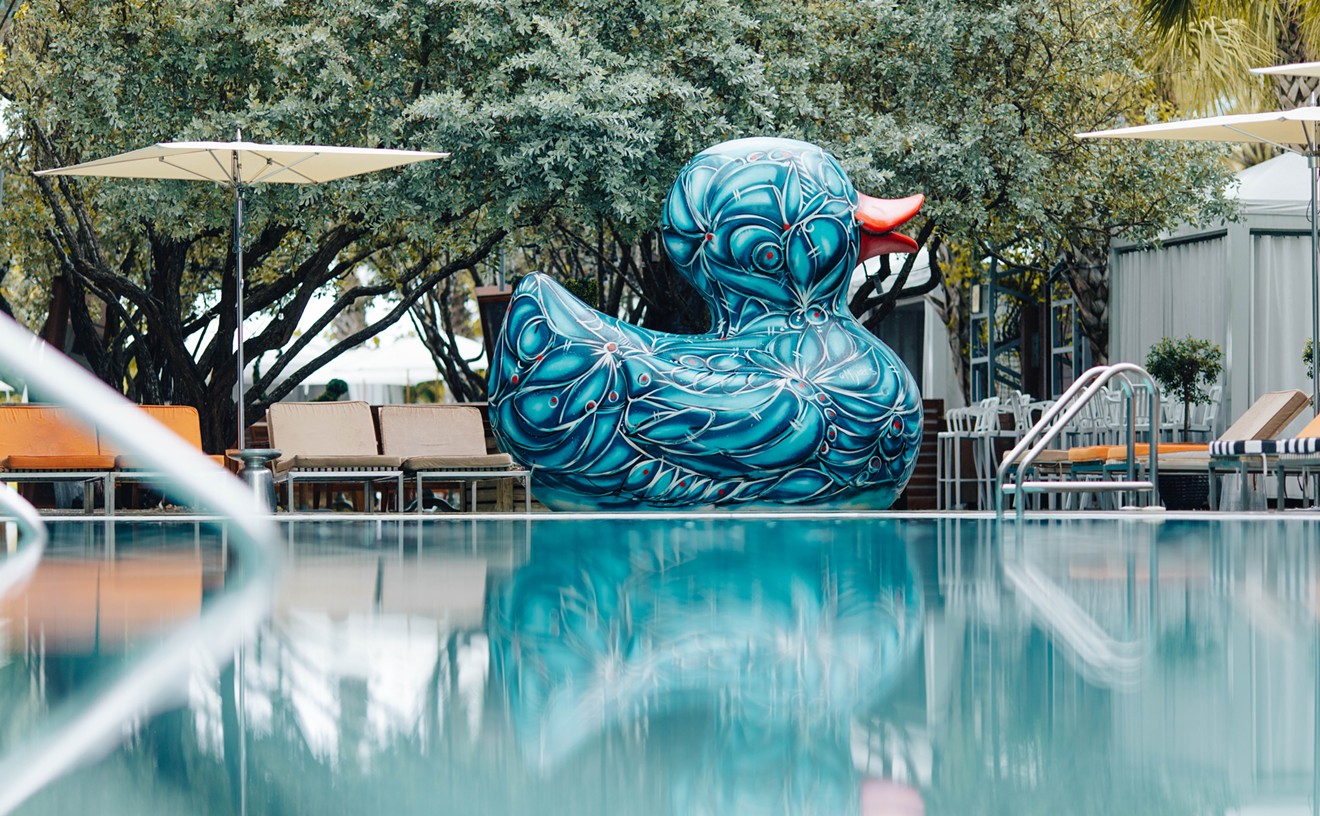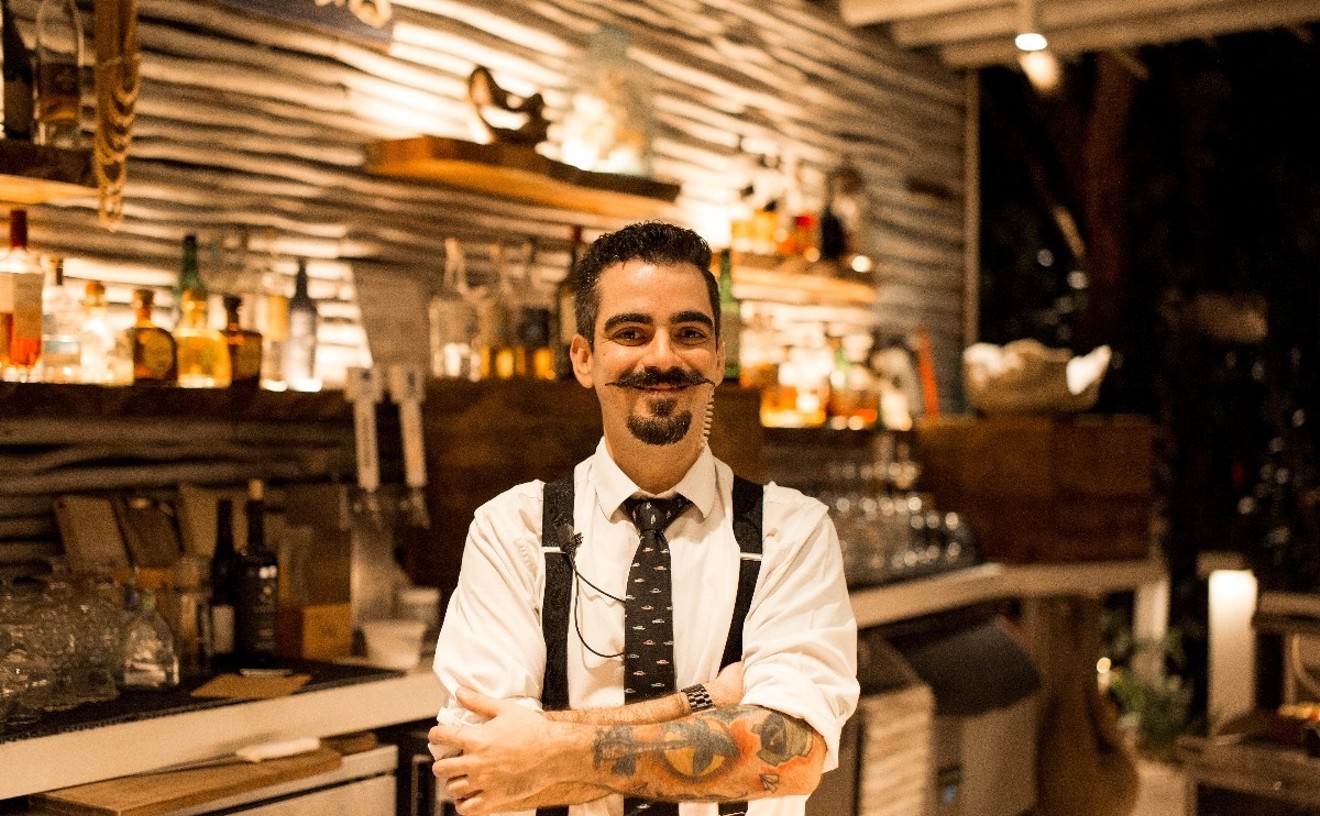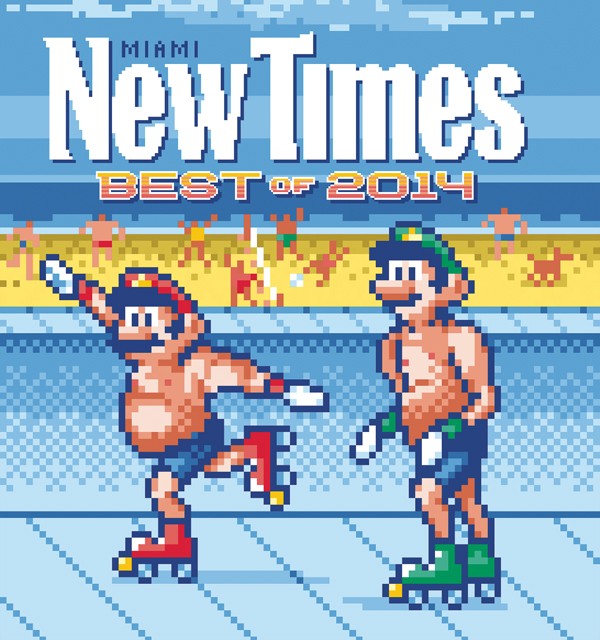LeBron claps his hands, exploding a cloud of powder over the scorers' table. Giancarlo Stanton slides the doughnut off his bat and strides into the box. Ryan Tannehill checks the play on his wristband and jogs into the huddle. The big game is about to start. And you've got a choice to make. You didn't snag a ticket to the stadium, so you can watch at home (yawn) or head to your neighborhood chain sports bar, where you know the food will be mediocre, the staff will be overworked, and the beer will be overpriced. If only there were another way. Good news, Miami sports freaks: There is, and it's in Kendall. Rock Fish Grill is a family-owned eatery with genuine homestyle hospitality, a sinfully tempting menu, and all the games on big screens over the bar. Don't slog through another unbearably mediocre plate of wings. Watch the game with homemade Maryland-style crabcakes ($11.99), fresh steamed snow crab ($9.99), or the signature golden fried Parmigiano-Romano-crusted tilapia sandwich, AKA the "big-ass fish sandwich" ($8.99). The walls are adorned with music memorabilia hailing icons ranging from Pink Floyd to B.B. King, and happy hour Monday through Friday from 2 to 7 p.m. includes $1 off craft beer drafts, $2 selected draft beer, $4 house wines, and 50 percent off all appetizers. LeBron is ready for the game. It's time you stopped making excuses.
Best Sports Bar
Rock Fish Grill
Best Pool Hall
Doral Billiards & Sports Bar
Sometimes a losing bet leads to a bigger bet, which leads to a very bad idea. The balls are racked. The cues are chalked. And the $100 bills are counted. Usually, an hour of midday billiards costs only six bucks at Doral's favorite strip-mall pool hall, Doral Billiards. But this next game of eight ball is worth ten grand. The other guy's fat wad of crumpled bills has been crammed into the buttoned pocket of an obese middleman. But you're broke. You're out of paper money. And you're borrowing from an acquaintance with a short temper and a remote piece of property on the edge of the Everglades. The collateral for this friendly loan is the key to a 335-horsepower family heirloom sitting in the parking lot — black, waxed, and the only thing you still own in this world. The other guy breaks, sinks six solids, then misses. You toss back the dregs of a $9 pitcher. You inhale. You exhale. You put down four stripes. You scratch. The other guy smiles, taps his last ball into a corner pocket, follows with the eight, and smiles wider. You feel the sickening, sinking feeling of losing everything. You lean against the table with an open hand on the smooth blue felt. You feel for the outline of the extra key hidden in your empty wallet. You contemplate the odds. You assess your surroundings. The ceiling is black. The walls are red. The floor is green. And it's about 20 paces at a full sprint to the front door.
- 7800 NW 25th St., Doral, 33122 Map
- 305-592-8486
- www.doralbilliards.com
Best Poolside Bar
Hyde Beach

Time for some real talk: It's damn difficult to mess up a poolside bar in Miami. You're beside a pool. There's a bar. You purchase cocktails, dip your feet into the water, and basically live the American dream as you sip your way to the bottom. How hard can this be, people? Yet an astonishing number of Miami hotels have conspired to ruin this simplest of good things with eye-poppingly overpriced drinks, shoddy service, and pools that are either inaccessibly hip or packed to the gills with sunburned out-of-towners. So props to Hyde Beach for getting it so right. Inside, the bar is decked out like a '70s Brady Bunch rec room, but outside there's 8,000 square feet of pool and beach fun. There are pitchers of mango mojitos ($80) and cucumber watermelon margaritas ($18), or for true backyard ballers, bottles of Moët & Chandon Ice ($475) and vases of sangria made tableside ($200).
- 1701 Collins Ave., Miami Beach, 33139 Map
- 305-455-2990
- hydebeach.com
Best Hotel Lounge/Bar
Living Room at W South Beach

Usually every W Hotel has a bar dubbed Living Room, and the South Beach outpost is no different. And though we've stayed at other W locations around North America, we've yet to find one with a lobby bar scene that's as chic as our local one. Beautiful women? Check. Power players? Check. Well-versed bartenders? Check. Excellent cocktails? Check. In fact, it's hard to believe that with so many lovely things surrounding you that the cocktails are still the star here. Concocted by noted mixologist and author Scott Beattie, the drink menu features creatively crafted libations that are meant to be sipped, not chugged. Complex flavors reveal themselves as they touch your tongue and slowly make their way to the back of your throat. Some of our favorites include the Hemingway daiquiri (aged rum, agricole blanc, fresh lime and grapefruit juices, simple syrup, maraschino liqueur, and bitters) and the Miami Manhattan (whiskey, bourbon, sweet vermouth, Angostura bitters, and old-fashioned bitters), which revamp classic cocktails with fresh flavors and give their syrupy impostors the boot. All cocktails cost $16 but are well worth the price. Plus, the W's masculine yet inviting setting means you'll never want to leave.
- 2201 Collins Ave., Miami Beach, 33139 Map
- 305-938-3000
- marriott.com/hotels/hotel-information/restaurant/details/miaws-w-south-beach/6494060/
Best Happy Hour
Doraku Sushi

Question not found on a recent SAT:
Sally had a shitty day at work. She's hangry and needs a few drinks but has only 20 bucks. What does Sally do?
A. She goes home — this is South Beach. You can't eat and drink for $20.
B. She buys a few cans of Four Loko at 7-Eleven and drinks them in the park.
C. She goes to Doraku during happy hour (5 to 7 p.m. daily) and gets two lychee martinis (two for $5), a California roll ($3), a crunchy crab roll ($4), and an order of edamame ($2).
Please think carefully before answering.
- 900 S. Miami Ave., Miami, 33131 Map
- 305-347-3700
- www.abokadosushi.com
Best Monthly Party
Catwalk
There's no question: Miami is a world-class party city. But for all its late-night charm, the scene can be a little redundant. Oh hey, another night out with beautiful people trying their best not to pay for drinks while staring at their phones and bobbing their heads to EDM! Thankfully, the Garret's Catwalk monthly ballroom party is lighting our cultural fire with something unlike anything else the city offers. This is not your grandmother's ballroom. Rather, it's a celebration of vogue dancing, a trend born in the '80s in New York's gay black community. The originators were often thrown out of their homes for their sexuality and lifestyles, so they made their own homes and began fighting it out on the runway. Once a month, Miami's local DJs Gooddroid and Bonnie Beats team up with the legendary Mike Q to host a friendly yet fierce competition to see who in South Florida really knows how to work. Anyone is welcome to give it a go, but honey, these bitches are bringing it. Don't think for a second you can get away with wingin' it. The guest judges make for interesting times, and the open bar from 11 p.m. to midnight gets the party started. Each month comes with a new theme, so dress to impress and brush up on your skills. Please remember — vogueing and walking are not the same thing. These judges come armed with shade. Don't make them throw it.
- 697 N. Miami Ave., Miami, 33136 Map
- 305-377-2277
- www.grandcentralmiami.com
Best Weekly Party
Slap & Tickle Tuesdays

A conundrum: For more than two years, Slap & Tickle has been one of Miami's best bets for a night of perfect grooves and drunken antics. But for more than two years, Slap & Tickle has also been the root cause of an epidemic of brutal Wednesday-morning hangovers around the Magic City. What to do? There's really only one answer: Stock up on coconut water and Advil and resign yourself to a weekday headache. Headed by local DJs Pirate Stereo, Santiago Caballero, and Panic Bomber, S&T was founded with the idea of giving everyone on the decks a place to play what they really love. Whether it's an international DJ delivering a special set or a local up-and-comer looking to get his or her foot in the door, everyone is welcome at S&T. The only rule is that you've got to heat up the dance floor, and because the people who pile in week after week come armed with a deep love of the music, that's not usually a problem. Hatched at the Electric Pickle, the S&T crew has lately made a cozy home on the intimate Bardot floor. There's usually no cover, and with late-night curfews and delicious drink specials, you'll be hard-pressed to find a better time this side of Hump Day.
- 3456 N. Miami Ave., Miami, 33127 Map
- 305-576-7750
- www.bardotmiami.com
Best Latin Club
Kukaramakara
"La casa de los artistas" is the slogan Kukaramakara uses to promote itself — and it's hard to argue with that self-assessment. In a city where people bow to the temple of the DJ, it's refreshing to see a live music club stake a claim on prime real estate in Brickell. However, live music alone doesn't make for a great Latin nightclub — most Latin clubs employ some kind of live instrumentation. Kukaramakara has set itself apart by doing it well for several years. The Colombian import started out on NE 11th Street in the old Studio A space. But when the posh South American crowds shied away from the dicey area, Kukaramakara made the best decision by packing up and moving to the city's South American expat epicenter of Brickell. Their live bands keep true to the target audience, employing mainly Colombian and Venezuelan musicians who are able to keep the Latin club vibe 100 percent authentic. Drinks are pricey here, but Miamians don't go to the club to eat and slam booze. Enjoy a moderately priced happy hour at one of the countless places nearby and then head to Kukaramakara for the real draw: shaking your ass to live jams until you can pronounce "merengue" like a native, rolled r and all.
- 8601 SW 124th Ave., Miami, 33183 Map
- 305-921-0333
- facebook.com/Kukaramakara-Miami-222639167765394
Best Rock Club
The Fillmore Miami Beach

The ghosts of Jackie Gleason and Jerry Garcia roam these halls. Opened in 1950 as the Miami Beach Auditorium, this 3,500-person theater was South Beach's chosen stage for Broadway-style musicals, world-class boxing exhibitions, and cameos by Frank Sinatra, Dean Martin, Bob Hope, and other cocktail-set celebrities. By 1964, it had become the official "home," as the façade proclaimed, "of The Jackie Gleason Show." And though the Great One's SoBe run lasted only six years, he earned a new moniker, Mr. Miami Beach, and the auditorium was permanently renamed in his honor. Four decades later, the ex-hippies finally moved into 1700 Washington Ave. and turned it into the southernmost outpost of Live Nation's Fillmore music venue franchise, named after the San Francisco original where Jerry Garcia and the Grateful Dead, Janis Joplin, Jefferson Airplane, and so many classic '60s rock bands became legends. Though almost constantly under threat of demolition as part of Miami Beach's ongoing pursuit of a 21st-century convention center, the Fillmore and all its history remains one of the only reasons that many of the world's biggest rock bands — from Vampire Weekend to Modest Mouse and Queens of the Stone Age — even bother visiting our city. And now with the sale of Churchill's Pub, the planned relocation of Tobacco Road, and the surprise closure of the Vagabond, Miami music fans and local opening bands such as Jacuzzi Boys need this storied old joint more than ever. As Jackie (dressed as leather-daddy Elvis) once said: "Noooooow, let's rock it and let's roll it, maaaaaan."
- 1700 Washington Ave., Miami Beach, 33139 Map
- 305-673-7300
- fillmoremb.com
Best Underground Club
Trade

Thanks to the Magic City's porous earth and position right at sea level, it's a scientific fact that Miami is one of the toughest places in America to get underground. There's a reason no one has a basement around here, folks. South Florida's musical underground, however, is a very different beast, and we're happy to report it's alive and well and ruled by benevolent overlords named Link/Miami Rebels. True EDM animals who've graduated from festival-ready anthems know that this party crew brings the best in progressive, deep, and techie house music that real fans want to hear. And their latest home base, which is not literally underground owing to the aforementioned geological restrictions, is called Trade. The SoBe spot is booked solid with rare and exciting acts across all groovy styles played on a luxurious dance floor under state-of-the-art lighting. With 7,500 square feet of space, Trade prides itself on being highly versatile, with heavy emphasis on a rich, full sound. From the bar to the system, the place was designed with a full-sensory dance experience in mind. It's not exactly Mammoth Caves, but for the 305 underground experience, Trade is the place to be.
- 1439 Washington Ave., Miami Beach, 33139 Map
- 305-531-6666
- trademia.com






